Motorola Droid 3 Review - Third Time's a Charm
by Brian Klug on July 30, 2011 12:01 AM ESTThe Droid 3 also takes an incredible number of design nods from the Droid X2 (and its physically identical cousin, the Droid X). In fact, I’d almost consider the Droid 3 more of a Droid X2 with keyboard than an in-place update of the Droid 2. Almost every single side has some language from the X2’s design vocabulary.
Starting up at the very top is an incredibly similar power and lock button, which juts out squarely from the center. This is just like the Droid X2 button, and a huge departure from the Droid 2’s rounded, off-center design. The headphone jack is on the far side and hangs over the edge slightly. There’s also a small gap for prying the battery cover off the Droid 3, which also does double duty as a port for one of the Droid 3’s three microphones. The power button is easy to locate thanks to it jutting out by almost one mm, and has a communicative click. I always did find that the Droid 2’s rounded button made the device seem sleek, but made powering the thing on sometimes a challenge unless you always put your finger on the button immediately.
The part of the Droid 3 that I find most similar to the X2 is the left side, which includes a microUSB and microHDMI (type D) port on the bottom quarter. In-between the two is a small circle that looks like it was intended to accommodate a charging LED (which the Droid and Droid 2 both placed next to the microUSB port), instead it serves no such purpose and seems to be an afterthought. I should note that the Droid 3 box doesn’t include a microHDMI to HDMI cable, so you’ll wind up having to order one if you want to try HDMI mirroring, which the Droid 3 does support.
The bottom of the Droid 3 still includes the lip motif that the original Droid started, however the bottom part of the lip is no longer incorporated into top display piece which slides. Dead center and right where the display piece ends is the main microphone for voice. This bottom lip is coated with a glossy chrome material that shows fingerprints, as is the entire display lip. The gap between the display and bottom slider portion is just shy of a fingernail, and thankfully there’s very little flex with the device closed. We’ll go into more detail about the slider in a second.
The back of the Droid 3 is no longer a single metal piece, instead it’s one large snap-on plastic part. Getting the battery door off is almost as harrowing on the Droid 3 as it is on the Nokia N900 - jam a thumb in, then pry the entire affair off. No matter how many times I do this, it’s an unnerving experience.
Behind that door is the Motorola’s 5.7 Whr battery, which is larger in terms of capacity and different in size compared to the Droid 2 battery. It’s a different model number entirely, so you’re unfortunately out of luck if you’re a previous generation Droid owner with a small collection of batteries.
Next to it is the SIM card slot, which of course comes prepopulated a Verizon/Vodafone SIM you’ll need to activate if you want to roam abroad. The other option is of course to call, ask politely for (or buy) an unlock, but more on that later. Adjacent to the SIM slot is the microSD card slot, which comes without any preinstalled card. That’s right, there’s no microSD card provided with the Droid 3, instead I guess the logic is that 16 GB of internal storage supplants the need for potentially slower SD card based storage. You can always add one of your own, however. There are also four gold pogo pins also on the back of the device which make contact with the Droid 3’s optional inductive charging battery cover.
Below that is the speakerphone port, which has a slightly raised top side to prevent it from laying completely coplanar and being muffled by a table. There’s a nice mesh grille preventing grime from getting inside too far in the speakerphone port. Dead center is another microphone for noise cancellation and for use with some fancy DSP when recording video.
On the far right side is another interesting change, gone is the dual-detent camera button completely, just like the Droid X2. It’s a change I think will initially confuse existing Droid users, especially because of how notable the camera button was in previously differentiating the device. At the very top is the volume rocker, which is one solid piece of plastic that pivots. It’s nice and clicky, thankfully. There’s also a small gap up near the volume buttons which a corresponding bulge on the display slider mates into.
This is what keeps the Droid 3’s slider mechanism so firm when the phone is closed and in portrait mode. It doesn’t oreo effect at all or have much play at all. When being slid out, the same applies until the bottom part extends beyond the bulge.


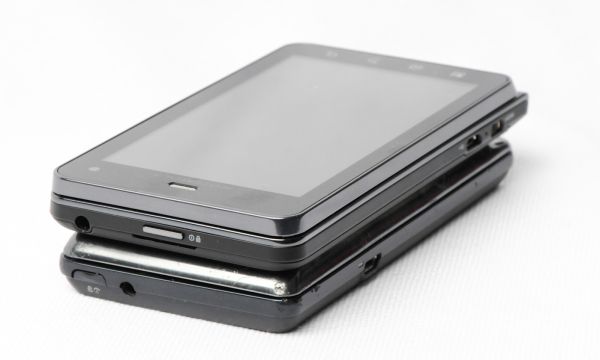
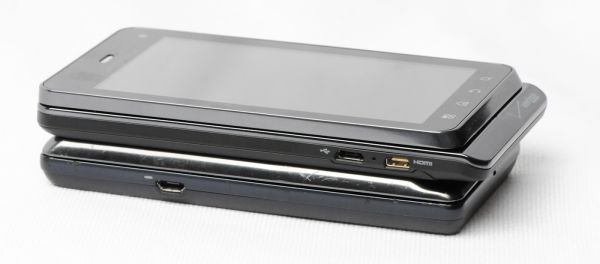
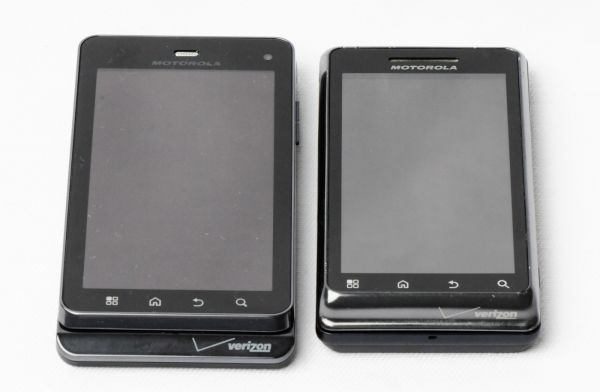

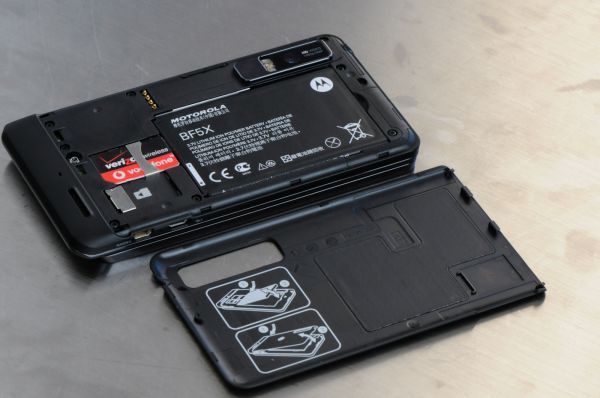

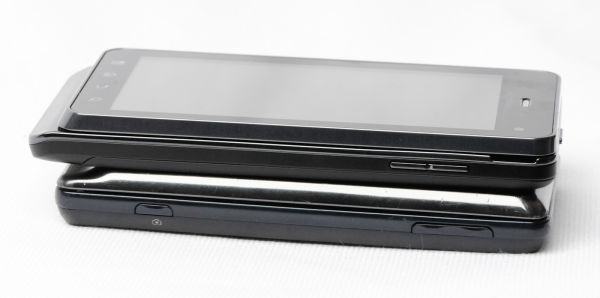
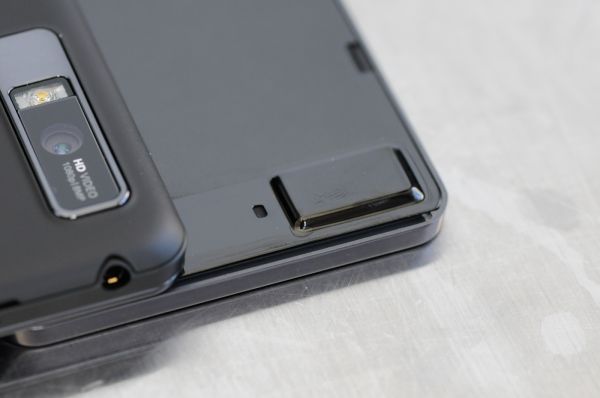








84 Comments
View All Comments
7amood - Saturday, July 30, 2011 - link
that's nice to hearplease don't forget to talk about the screen problem
http://www.gsmarena.com/samsung_galaxy_s_ii_displa...
It's really hard to accept that my perfect SUPER AMOLED is not perfect.
It's harder to accept the fact that samsung don't give a f*** about me since they already have my money.
takumsawsherman - Saturday, July 30, 2011 - link
On the GL benchmark, it shows iPhone 3GS running faster than iPhone 4. Is this correct? If so, why do you think iPhone 4 is performing worse on the test?Ryan Smith - Sunday, July 31, 2011 - link
GLBench runs at the device's native resolution. The iPhone 4 is 4x the resolution of the 3GS.Lucian Armasu - Sunday, July 31, 2011 - link
It looks like OMAP is on the way out from the market, though:http://semiaccurate.com/2011/07/29/texas-instrumen...
Now the fight will be left between Nvidia, Qualcomm and Samsung.
martyrant - Sunday, July 31, 2011 - link
My VP wanted one, so we both got one the same day. I don't talk on the phone as much, but after a week I did a conference call on it and it drained it from 80% to 15% in under an hour. I also just left it on a charger last night, saw it go from 30-90%, went to bed, got up and just checked it (while still plugged into the charger) and it's back at 30%. Did you see any strange anomalies when running your battery life tests? My VP loves the phone, but hates the battery--his dies all the time and so does mine. It seems like while your tests look awesome, the real life performance of this phone is nowhere near in line with those tests when it comes to battery. I have tried max battery saver, just about everything---had to get the VP an extended battery pack and he still doesn't know if he can continue to use this phone because of the battery issues.martyrant - Sunday, July 31, 2011 - link
It went to 20% from 30% while writing that comment, while plugged into the charger. Hot, right?josby - Sunday, July 31, 2011 - link
Same here. I bought mine the day they were released in stores, but I've been anxiously awaiting the AnandTech review of it because I knew it would include battery life comparisons. I came from a T-Mobile G2 (running Cyanogen7) and have all the same apps, with the same update intervals set, on my Droid3 as I had on the G2, yet the battery life is very noticeably worse. It can barely make it from morning til night even with very light usage.In fact, I always left my G2's wifi on, yet the Droid3 still doesn't last as long even if I leave wifi off.
Yet, the G2 does considerably worse than the Droid3 in the battery life tests in this review.
Brian Klug - Sunday, July 31, 2011 - link
That's odd - I wonder what kind of signal environment he was in when he made that call. Could you find out what Rx signal strength was in dBm?The only part of the entire cellular architecture that has a power control loop is the phone->base station, and when you're in a low signal environment the phone can increase Tx power to be "heard" by the base station and thus hurt battery life considerably. We always test in areas with at least -75 dBm or better.
-Brian
photoguru - Monday, August 1, 2011 - link
I had major problems with my battery life until I realised that the power adapter for the Droid 3 requires 5.1v at 850mA which is quite a bit higher than most chargers. Mine actually died while browsing the web and being plugged into a Belkin usb charger.Also, theres an issue with programs not turning off once you exit them. Task killers should fix it but I actually just went through the programs and manually adjusted which ones can continue to run in the background. Now my battery lasts almost twice as long as it did before, and quite a bit longer than my droid 1 and droid 2 global.
anandtech pirate - Sunday, July 31, 2011 - link
how about the Evo3D?